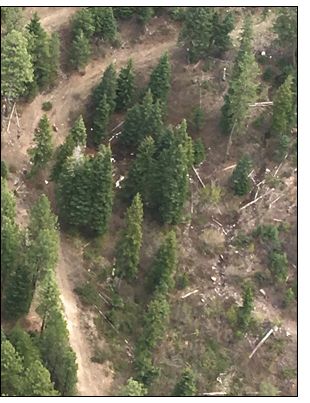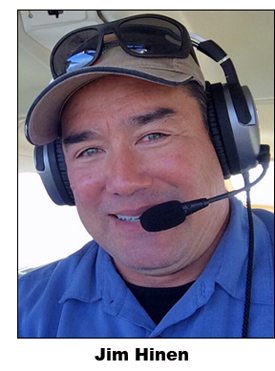
An aviation search is not what you might think
![]()
During Mother's Day weekend, Idaho's Division of Aeronautics initiated a search for a plane that went missing on its way from Boise to McCall. The pilot did not file a flight plan, which made the search even more difficult since the path of the flight had to be assumed. The search really began on Monday (May 14). There were three Civil Air Patrol (CAP) aircraft flying that morning, working in coordination with Aeronautics. The Division's Tim Henderson coordinated the search with CAP, and Aeronautics' Jim Hinen was flying with them. Below is his account:
JH: Most people not familiar with aviation think that you will see the plane or a big part of one when they hear that you’re searching for a plane that has crashed. In reality, it is much different.
You may only see pieces and parts. In this accident, there was no post-crash fire, which made it even more difficult to find.

The terrain also affects the probability of detection. We had multiple aircraft searching in the grid where the accident occurred. My aircraft probably flew over the site at least 100 times during the search. There were many patches of snow that looked like it could be a wing or part of an aircraft, and we have to examine everything that looks like that or anything that just doesn't look right.
Our aircraft have equipment to help locate the Emergency Locator Transmitter signal, but the signals we were receiving were intermittent, and due to the location on the side of a mountain, the signals were bouncing off the rough terrain.
The crew consisted of a mission pilot responsible for safely flying the aircraft and avoiding terrain and is in the front left seat of the aircraft, the mission observer responsible for searching out the right side of the aircraft and is in the front right seat of the aircraft, and the mission scanner, who sits in the back of the aircraft and is responsible for searching out the left side of the aircraft.
In mid-afternoon, we had just received a locator hit on our Becker unit from an intermittent signal. We interpreted it to mean that we probably flew over the aircraft or were very close. I told the crew I would extend out, offset to one side and fly back over the location. You can't really see anything directly in front and below the aircraft and that is the reason to fly out and extend and offset when flying back inbound to the suspected location. As I was flying outbound, I noticed something to my left down low. It just didn't look right.
My mission scanner thought it was an old campsite. I circled over the location to get a closer look, and we determined it was a debris field. We then noticed the tail of the aircraft leaning up and inside a large tree. It was not noticeable from overhead, but we flew a little lower and almost adjacent to the site as it was on the side of the mountain. We circled the location until the ground Search-and-Rescue assets arrived and secured the crash site.
Pictured above is the wreckage as discovered by Hinen on May 14.
Published 05-25-18